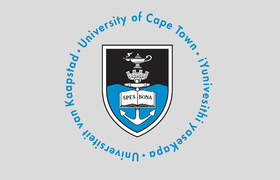Historic botanical treasure donated to UCT
14 October 2025 | Story and photo Hishamodien Hoosain. Read time 4 min.
The University of Cape Town (UCT) recently hosted an event to mark the donation of a facsimile edition of the Flora de la Real Expedición Botánica del Nuevo Reino de Granada (1783–1816) to the Bolus Herbarium. The donation, made by the Spanish Consulate, represents a significant addition to one of South Africa’s most important botanical archives.
Directed by Spanish botanist José Celestino Mutis, the Flora is one of the most remarkable outputs of the Enlightenment-era scientific expeditions. Undertaken between 1783 and 1816 across present-day Colombia and northern South America, the expedition produced around 6 000 botanical illustrations, along with manuscripts, plates, correspondence, and some 24 000 dried plant specimens. Though unpublished in Mutis’s lifetime, the facsimile edition now available at UCT brings this extraordinary archive to a broader academic audience
Celebrating the donation
The event was attended by academics, students, international dignitaries, and collaborative partners. UCT’s dean of the Faculty of Science, Professor Hussein Suleman; and the head of the Department of Biological Sciences, Associate Professor Colin Attwood, delivered opening remarks.
Professor Suleman described the donation as “a bridge between continents, histories, and generations of scientific inquiry”, noting its potential to connect scholars and institutions across three continents. “Through the donation, very interesting relationships have started,” he said. “There is a lot of exciting research happening in this space, much of what Professor Muthama Muasya and his team are studying.”
Reflecting on the digital preservation aspect, Suleman added: “I'm a computer scientist; I study information and how we build digital archives. Even though I work with digital information, seeing these physical books is an amazing experience. We have access to all this research, especially in this area where we have already collected vast amounts of material. This donation adds to that collection and is much appreciated.”
Associate Professor Attwood emphasised the rarity and value of such works. “Rare books are kept behind locked doors,” he said, recalling that only once in his life had he been granted access to view the collection under strict supervision. He reassured attendees that “these books will be getting the best care and are certainly in the right place”.
Preserving the Past, Building the Future
Professor Muasya, keeper of the Bolus Herbarium, welcomed guests and reflected on the historical significance of housing both specimens and reference materials together. “We have a collection of plants and plant names that are attached to a physical specimen,” he said. “About 160 years ago, when Harry Bolus founded the Herbarium, he said that the plants and the library must be under the same roof. He saw the value of that connectedness and keeping them together.”
Muasya also shared his personal experience as a researcher navigating historical archives. “As a PhD student coming from Africa to go to Europe to look at the original books even though some are available online, we were still trying to connect what was growing in Madrid 400 years ago with what was recorded in parts of South America. This collection allows us to make those links between the past, the present, and the future.”
He concluded by highlighting the importance of international collaboration “Another important component is the immense relationship between us as researchers in Southern Africa and researchers in Spain, with quite a number of us doing botanical collaboration.”
The Bolus Herbarium
The Bolus Herbarium is the oldest functioning herbarium in South Africa. With over 350 000 specimens, it plays a critical role in supporting taxonomy, systematics, and conservation research, particularly within the biodiversity-rich Cape Floristic Region. It ranks as the third-largest herbarium in South Africa and the third-largest university herbarium in the Southern Hemisphere.
This donation reinforces the herbarium’s role as a world-class centre for botanical research and education. UCT researchers and students now have access to a collection that spans centuries, connects continents, and provides critical context for understanding plants as both scientific and cultural heritage. It complements ongoing research with Spanish institutions and further cements the Bolus Herbarium’s position as a hub of international botanical scholarship.
 This work is licensed under a Creative Commons Attribution-NoDerivatives 4.0 International License.
This work is licensed under a Creative Commons Attribution-NoDerivatives 4.0 International License.
Please view the republishing articles page for more information.










